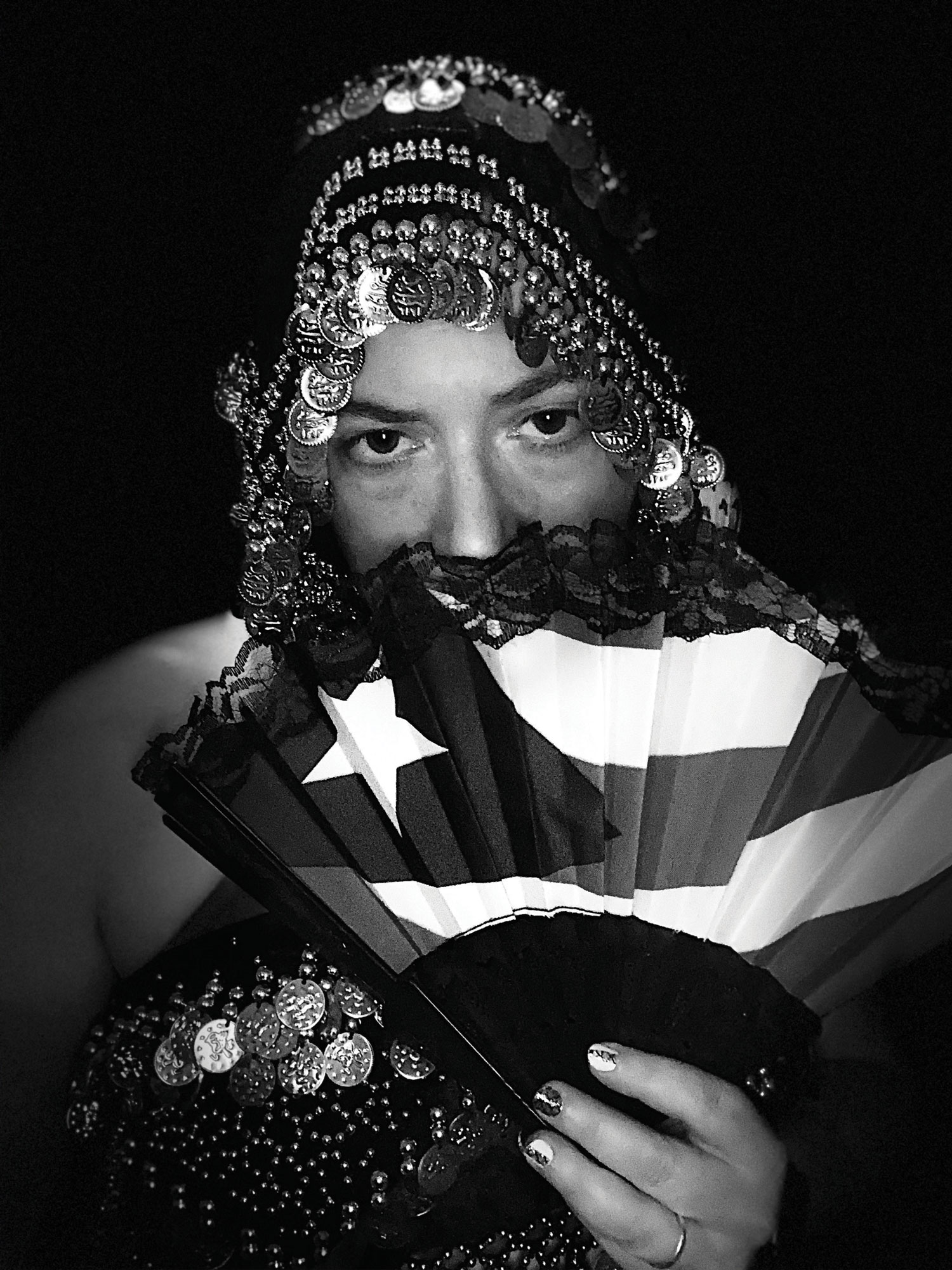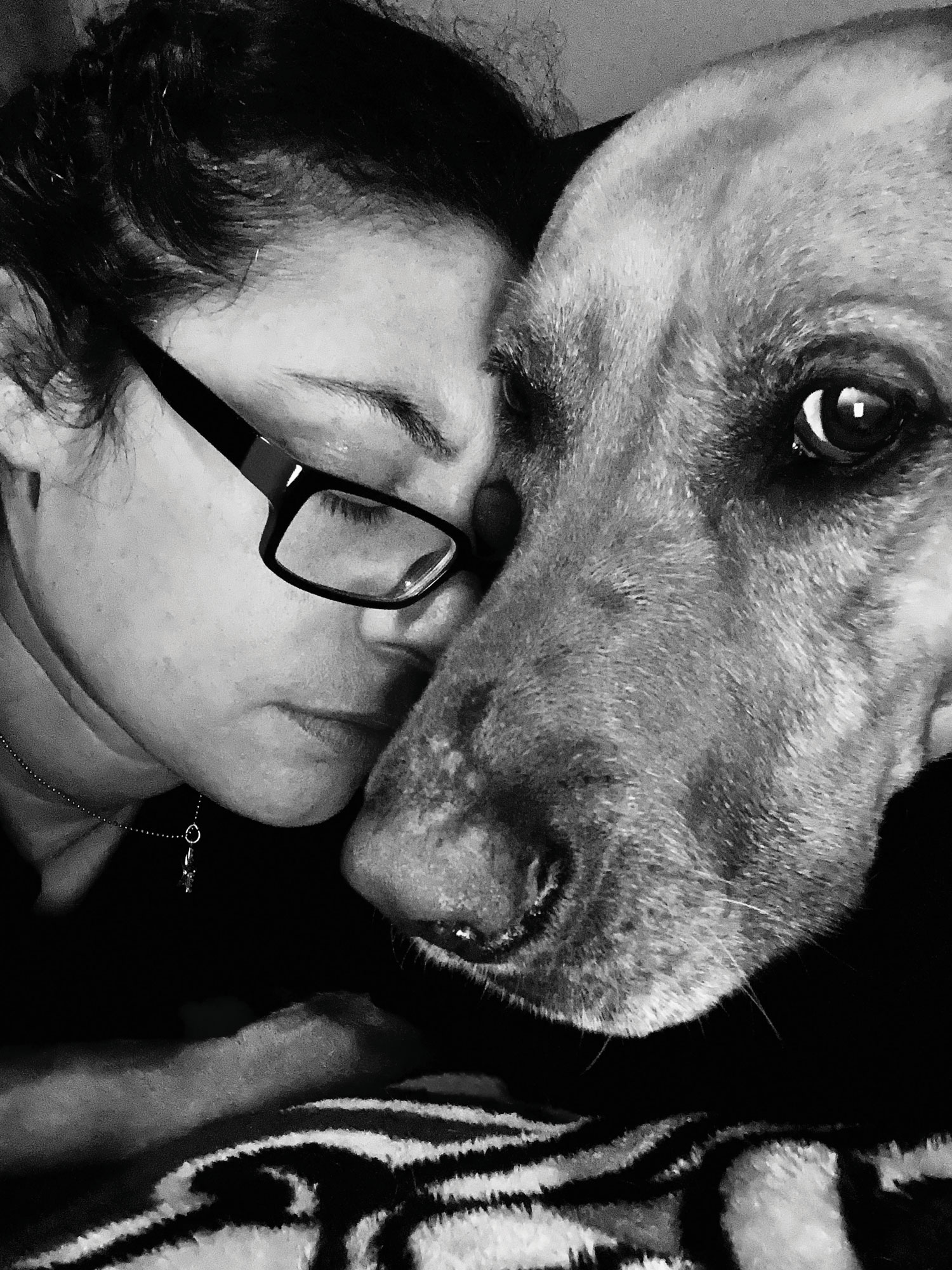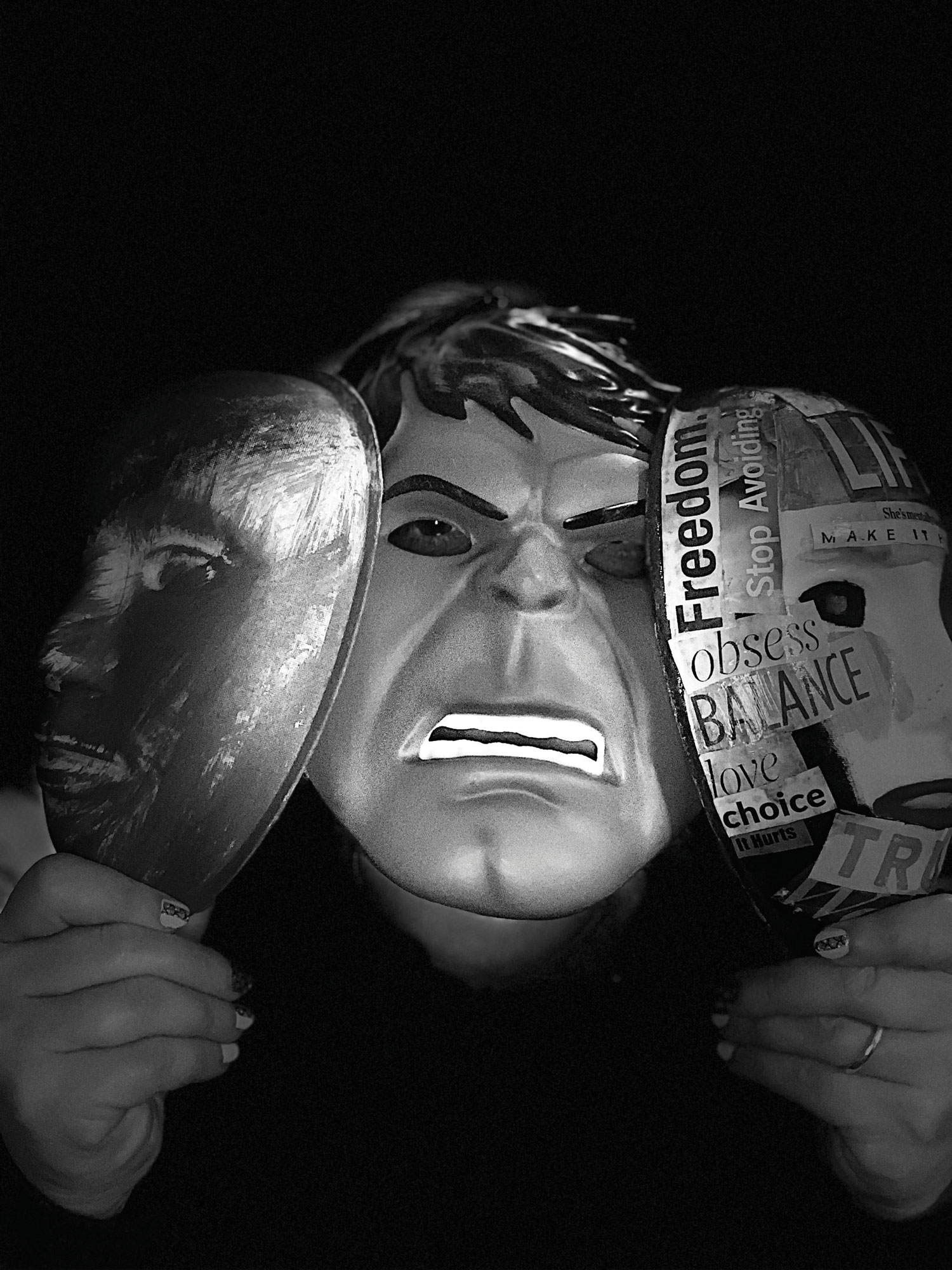
Me, Myself and Eye
ONLINE PRESENTATION
Me, Myself and Eye Home // Leslie Elsasser - Introduction // Selina Roman - Mind Currents // Michael Ball // TC Bryant // Larry Busby // David Canaday // Michael Congdon // Brandie Dziegiel // Loretta Fields // Jeaniel Image // Douglas Eric Jordan // Valerie Larson // John Leduc // Jason Lind // Mikko Maki // Alex Martinez // Matias // Noemys McConnell // Megan OíConnell // Robert Ortega // Adaina Plaza // Pat Randall // Heather Rivera // RaeAnne Swanson // Michael Webb

Heather Rivera, Heritage, 2020
HEATHER RIVERA - US AIR FORCE
Heritage
I can remember as a little girl, my mom and I, wearing babushkas, would light the shabbat candles. A babushka is a scarf that is tied under the chin and typically worn by Polish and Russian women and comes from a conservative and orthodox Jewish background. The hair is considered sacred and is oneís crown and glory. Covering of the head in Judaism is because only the married spouse shall see the wifeís hair. My motherís heritage and culture is from what is now the Ukraine. When she and my grandmother were young, Ukraine was still part of Russia.
Originally, I picked the two articles (flag fan and babushka) because of the color contrast and the definition of embellishments against each other. The Puerto Rican flag fan represents my husband and his heritage, culture, and race. I chose the babushka and Puerto Rican flag fan to represent our family as a whole and how we both respect each otherís upbringing and culture. The Puerto Rican fan represents how much respect I have for my husband and his heritage. His family came from Spain and settled on the island. The cloth is a belly dance scarf which is a tradition of the Middle East. After WWII many Jewish individuals settled in Israel which became a country shortly after the end of the war. In a way that is my culture as well. Both stories show how far both families went to escape injustice and find a new path without persecution or bias towards their race or culture. I also made this image because of the current cultural climate. Heritage shows that two people from completely different areas of the world can come together as one in unity and still maintain the traditions and culture of the past. I stare directly at the viewer. I want them to see me as a female, a strong female, who cherishes not only my background and history, but also my husbandís as well.
The fan has gorgeous detail, but it also shows a feminine side of me. I was in the military for fifteen years and I wore a uniform that looked just like the menís uniform. The only difference was that women could have longer hair. For professional reasons, the hair had to be above our collars, but I also believe that our hair had to be up to avoid showing a feminine side. Fingernails could not be painted with colors, they had to be neutral. Our makeup and hair color had to be neutral. Femininity is not something that the military looks highly upon.
I have loved working with black and white photography since I was in high school and have always found that it shows all imperfection and beauty at the same time. Black and white photography is not easy to accomplish because the camera flash tends to focus on the shiny objects and not the actual portrait.
I took the Breaking Barriers workshop because I wanted to learn more about the camera and revisit some longlost skills. When I learned the workshop was going to be about portraiture, I thought it would be fun to learn a new aspect of myself. Breaking Barriers was suggested to me because I express a lot of myself through arts in different mediums and the workshop gave me a reason to put the camera back into my hand and learn new things about the camera and myself that I havenít seen or done in years.
HEATHER RIVERA
US AIR FORCE

Heather Rivera, Face of Reliance, 2020

Heather Rivera, Faces of Life, 2020
For more information:
Email Leslie Elsasser at lelsasse@usf.edu
or Ashley Jablonski at danyele@usf.edu
Breaking Barriers 2020 is supported by the James A. Haley Veteransí Hospital, Love IV Lawrence, Hillsborough Arts Council, and the Florida Department of State.

Subscribe
Sign up for USF Institute for Research in Art email updates!
Follow us
Visitor Information
Graphicstudio Hours:
M–F 10am–5pm
USFCAM Hours:
Mon. to Fri. 10amĖ5pm
Thurs. 10amĖ8pm
Sat. 1Ė4pm
CAM is closed Sundays, all University and State of Florida holidays, and between exhibitions.
Tours:
Groups and organizations interested in tours of the exhibition should contact CAM to schedule at least two weeks in advance at (813) 974-4133.
Accessibility:
The University of South Florida Contemporary Art Museum (USFCAM) is fully accessible to visitors with disabilities. There are disabled parking spaces outsde of the museum, an accessible entrance, good lighting and accessible restrooms.
The museum follows the USF guidelines regarding service animals.
USFCAM faculty and staff are pleased to work with organizations that provide cultural opportunities for disabled clients to tour the Museum. Please call (813) 974-4133 two weeks in advance to request specific tour information. For more accessibility information please call (813) 974-4133.
Internships
Interested in an internship at CAM or Graphicstudio? Visit our Internships page to find out how to apply and what deadlines you need to know.
Copyright + Reproduction
The electronic images available on this site are subject to copyright and may be covered by other restrictions as well. The images are made available to the general public for the sole purpose of representing the USF Contemporary Art Museumís programs and collection. Copying or redistribution of the images in any manner without the express written permission of the University of South Florida Institute for Research in Art is strictly prohibited.
Contact
caminfo@admin.usf.edu
(813) 974-4133